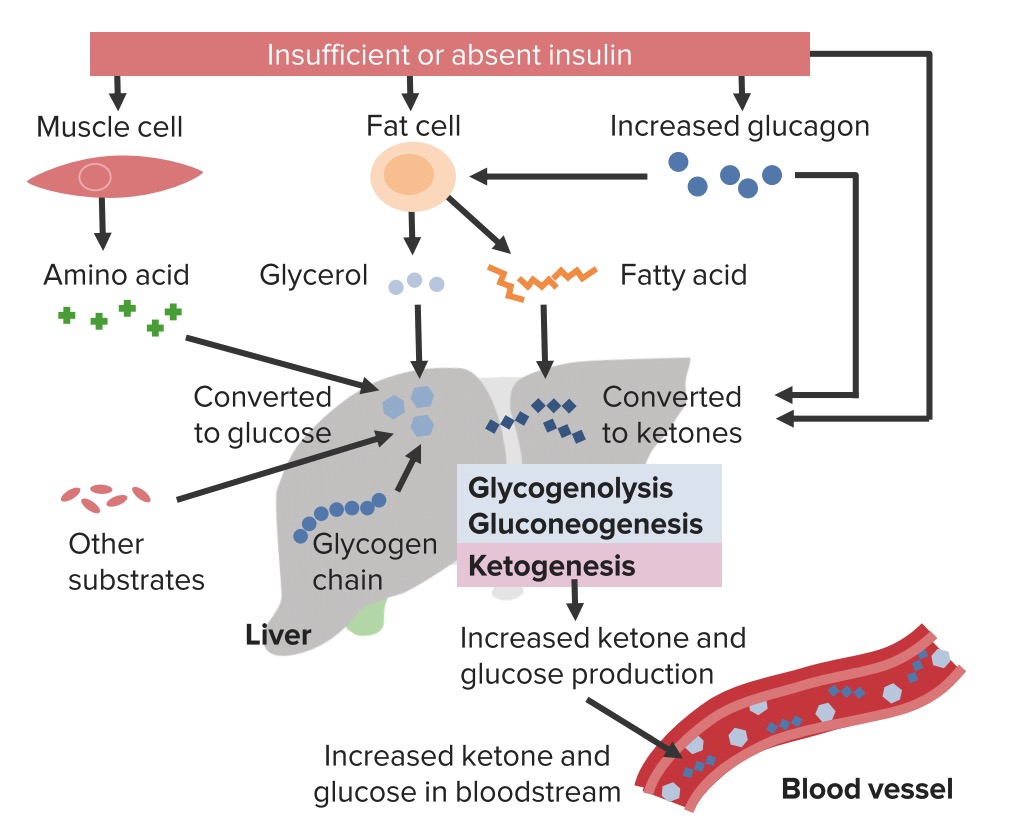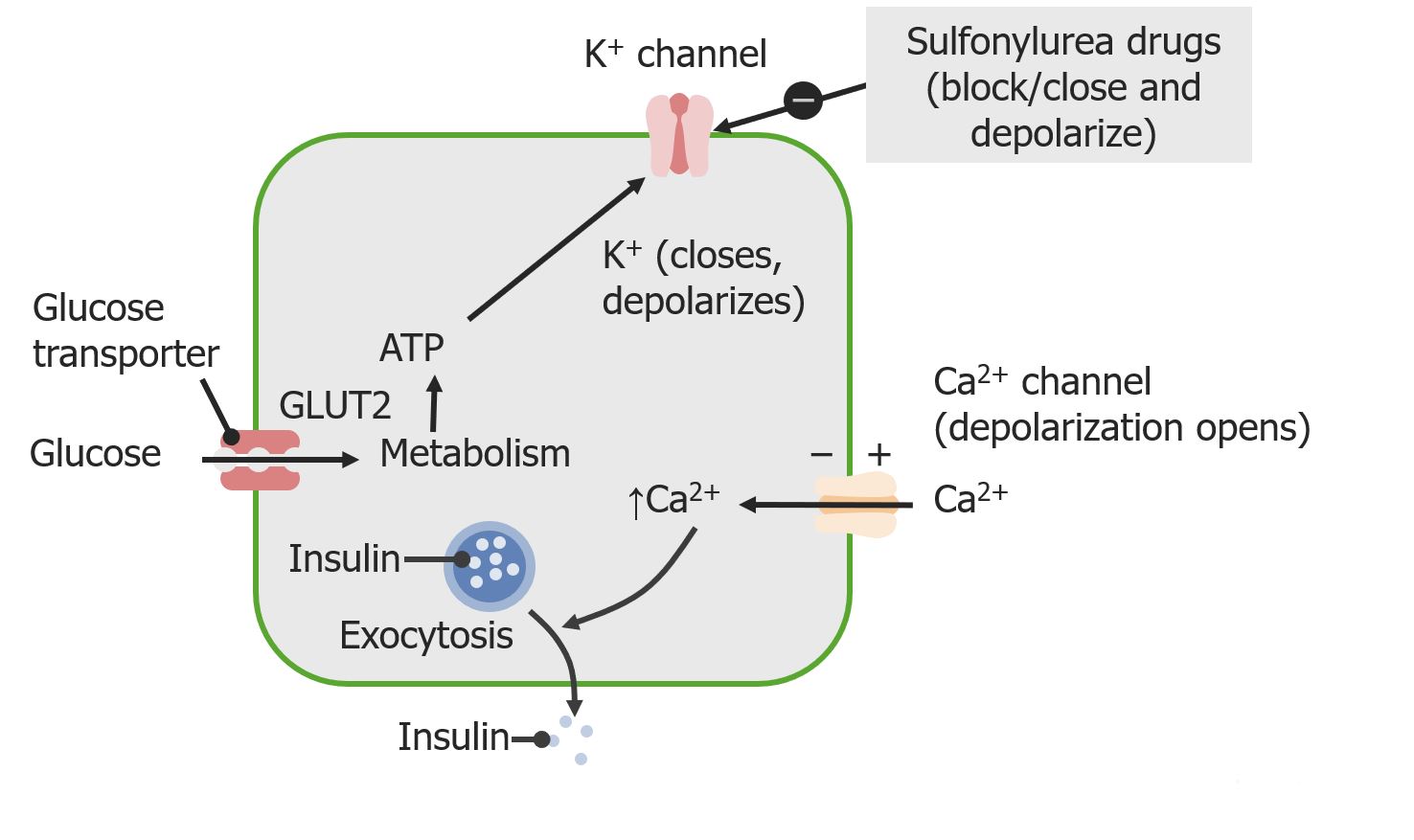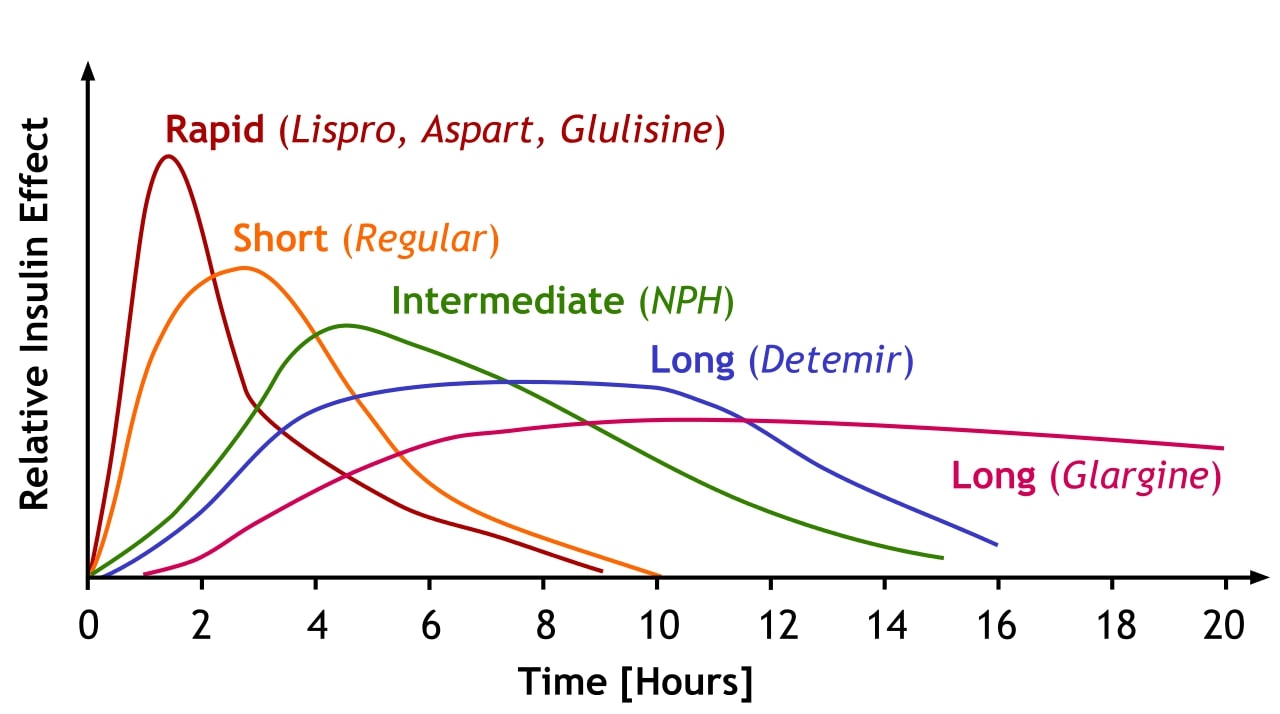Playlist
Show Playlist
Hide Playlist
Diabetic Ketoacidosis: Treatment
-
Emergency Medicine Bord Hypo and Hyperglycemia.pdf
-
Download Lecture Overview
00:01 The treatment for DKA. 00:03 First and foremost, focus on that airway, breathing, and circulation. 00:07 If you have any issues in any of those components, go ahead and address them. 00:11 In the circulation component, you’re definitely gonna probably wanna start giving IV fluids. 00:16 Your patient’s gonna be dehydrated, they’re gonna be volume deplete. 00:19 We also wanna focus on the potassium level. 00:23 So you’re gonna get your initial EKG which can give you clues about what your potassium level is, but you wanna make sure that you have your potassium resulted before you start insulin. 00:33 Because what’s gonna happen is that insulin is going to shift the potassium into the cell. 00:38 This is actually one of the big iatrogenic things that we can do to harm people who present with DKA. 00:45 Always wait for the potassium level to come back before you start insulin. 00:50 So you wanna start repleting the potassium if it’s less than five milliequivalents per liter. 00:56 So for patients in whom the potassium level is between 3.3 and 3.5, you wanna add between 20 to 40 milliequivalents of potassium per liter to their fluids. 01:08 If the potassium is less than 3.3, you wanna replete more aggressively and potentially give boluses of potassium and to give it a little bit more readily. 01:17 The reason for this is because insulin is gonna shift that potassium into the cell, leading to hypokalemia. 01:24 So we’ve waited for our potassium to resolve before we started our insulin and we can go ahead now and start it. 01:32 So it’s no longer recommended that you give a patient a bolus, and I wanna be clear here that what we’re talking about is an IV insulin infusion. 01:40 There are some evidence out there that patients with DKA can be treated with subcutaneous insulin and that very well may be an appropriate pathway, but for the most part, our mainstay of treatment in therapy for these patients with DKA is IV insulin. 01:54 So you wanna administer 0.1 units per kilogram per hour, and this is gonna be a continuous infusion for the patient. 02:01 And if the blood sugar gets too low, you wanna start giving D5 half NS. 02:09 So if the blood sugar gets less than 250 is when you wanna start administering this. 02:15 Again, you wanna make sure you’re looking for and treating an underlying cause as needed. 02:19 So if the patient has an infection, you give them antibiotics. 02:22 If a patient is having myocardial ischemia, you treat them with aspirin and whatever other indicated treatments. 02:29 Now, what are the complications here? The main things we need to worry about when we’re treating? So one is iatrogenic complications. 02:38 So a big one here is hypokalemia. 02:41 If you administer the insulin without repleting the potassium, the potassium levels can potentially get dangerously low. 02:49 The other is hypoglycemia. 02:51 So the patient comes in with a very high blood sugar and elevated blood sugar, they can in turn when the insulin has started and the treatment is administered, get a very low blood sugar. 03:02 That’s why we recommend that when the glucose level gets below 250, you start giving glucose containing IV solutions. 03:10 And lastly, pulmonary edema. 03:12 There’s a lot of fluids that are given here, right? You’re giving IV fluids, you’re potentially giving potassium. 03:18 You’re giving insulin, and all of that can add up especially in a patient who doesn’t have normal heart function. 03:25 So you wanna be careful in those patients to not give too much fluids or to be keeping an eye on their respiratory status. 03:31 The other major iatrogenic complication or a major complication here would be cerebral edema. 03:39 Cerebral edema generally would occur after 6 to 10 hours of treatment. 03:43 This is generally very rare and is more common in younger kids. 03:48 So kids less than 5 years of age. 03:50 For these patients, they would develop altered mental status and it’s important to remember that this does have a very high mortality. 03:56 So mortality that approaches 90%.
About the Lecture
The lecture Diabetic Ketoacidosis: Treatment by Sharon Bord, MD is from the course Endocrine and Electrolyte Emergencies.
Included Quiz Questions
Prior to starting insulin in a patient with 3.3–5 mEq/L serum potassium, what is the dose of potassium infusion that should be initiated?
- 20–40 mEqs/L
- 5–10 mEqs/L
- 10–15 mEqs/L
- 15–20 mEqs/L
- 40–60 mEqs/L
What is the electrolyte-associated complication that could arise when you administer insulin?
- Hypokalemia
- Hyponatremia
- Hypomagnesemia
- Hypophosphatemia
- Hypocalcemia
Customer reviews
5,0 of 5 stars
| 5 Stars |
|
5 |
| 4 Stars |
|
0 |
| 3 Stars |
|
0 |
| 2 Stars |
|
0 |
| 1 Star |
|
0 |








